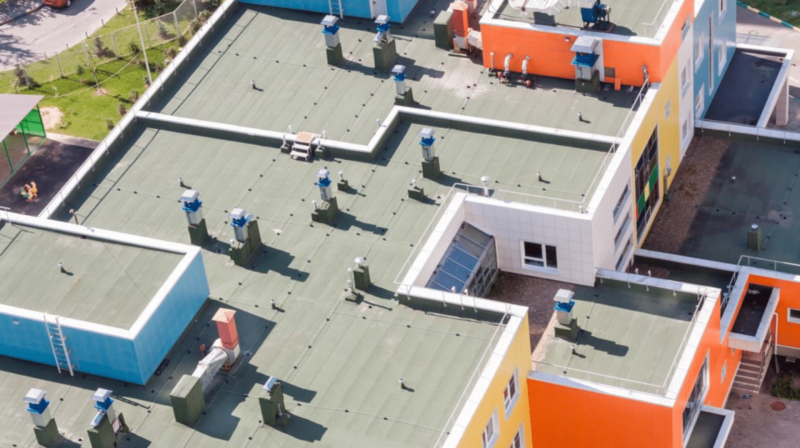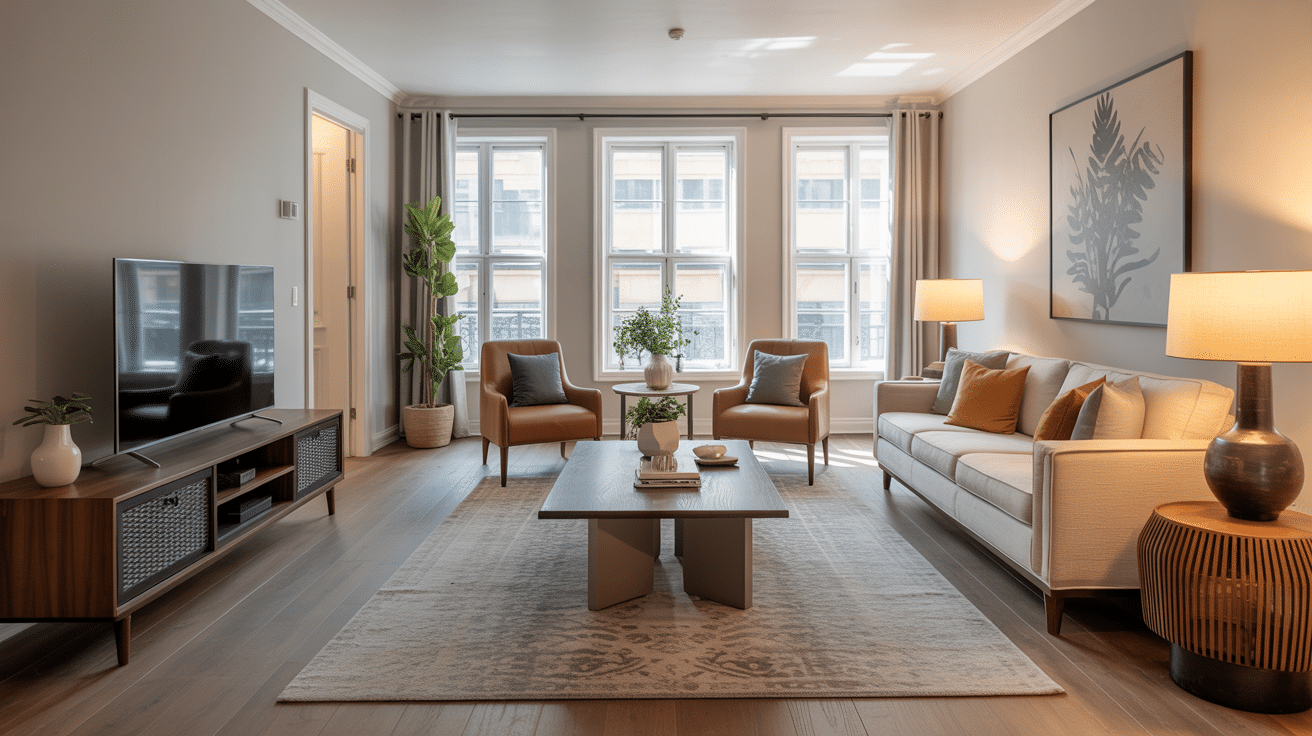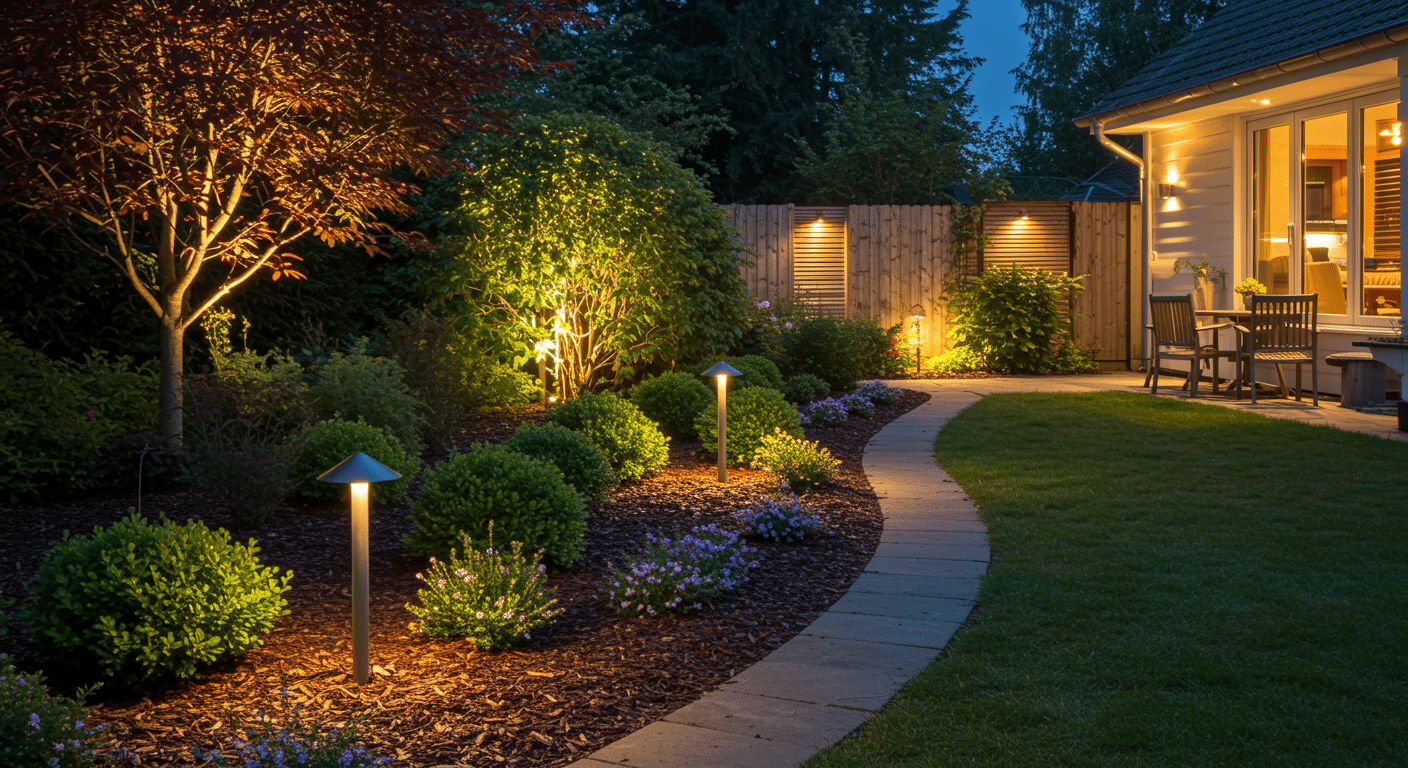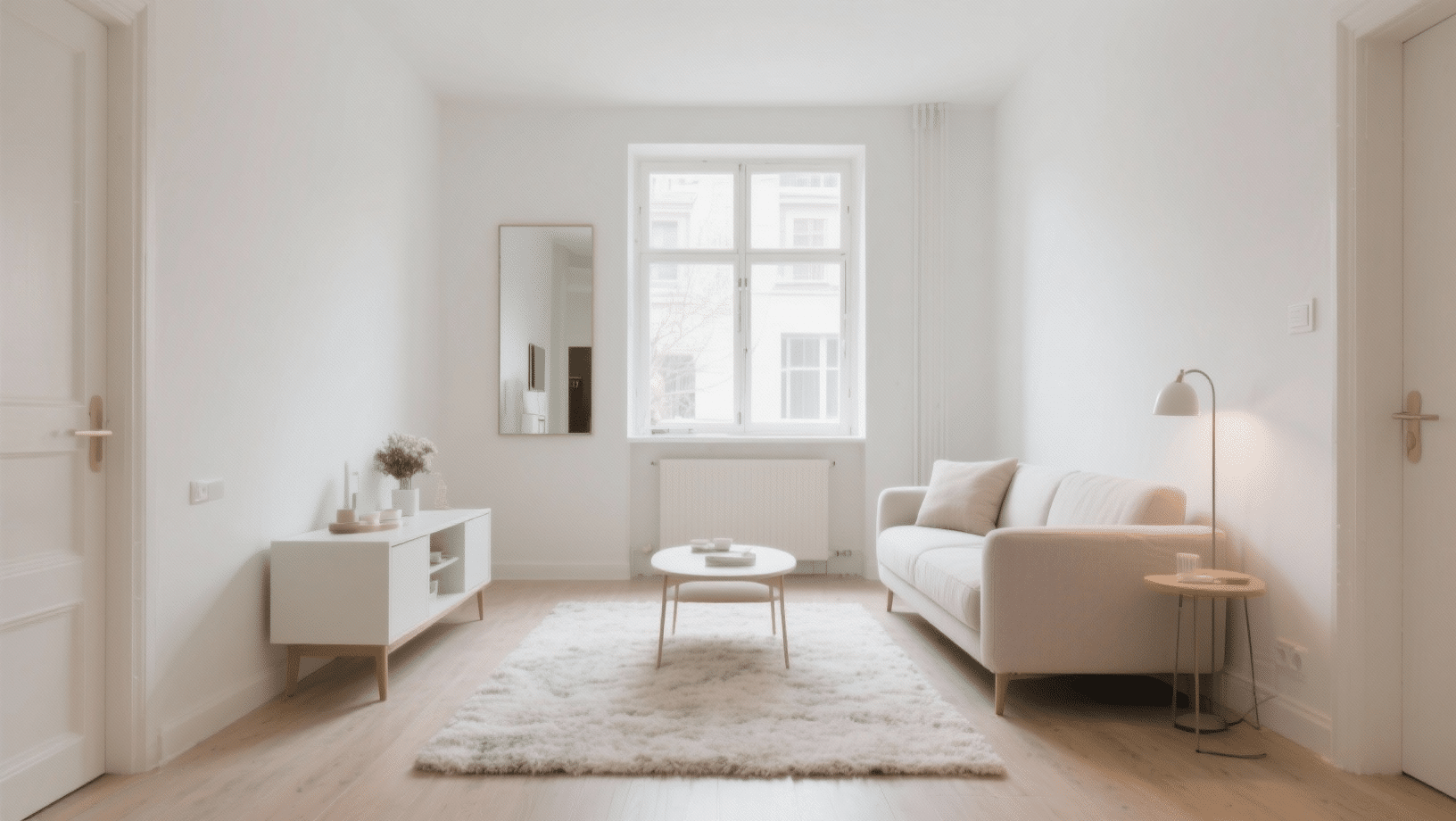Have you ever thought why do commercial buildings have flat roofs, while homes have sloped roofs and office buildings and warehouses seem to have flat tops? I used to think it was just a style choice until I learned the real reasons behind it.
Ever wondered why commercial buildings have flat roofs? The answer lies in practicality, not just looks.
These flat surfaces offer benefits that go way beyond what meets the eye. From saving money to creating extra space, there’s more to this design than you might think.
Let me show you the smart reasons behind this common building choice.
Origin of Flat Roofs on Commercial Buildings
I find it fascinating that flat roofs aren’t a modern invention. They date back thousands of years to ancient civilizations.
Historical development:
- Ancient Egypt and Mesopotamia used flat roofs for their dry climates
- Industrial Revolution brought mass production to America
- Early factories needed large, open spaces without roof supports
- Flat roofs allowed maximum interior room for machinery
The real boom happened in the 1900s when new waterproofing materials made flat roofs practical in wetter climates. I’ve noticed that as cities grew, builders realized flat roofs were perfect for commercial needs; they were faster to build and created more usable space.
Why do Commercial Buildings Features Flat Roofs?
When I first started exploring why commercial buildings have flat roofs, I was surprised to find it’s far more than a style choice.
The decision involves strong business reasons, cost efficiency, maximizing usable space, easier maintenance, energy savings, and future flexibility, which make flat roofs the practical go-to for commercial structures.
1. Cost-Efficient Construction and Materials
From what I’ve seen in project budgets, flat roofs use less material and are faster to build. There’s no need for expensive angled supports, which keep costs in check. Workers also move faster and safer on flat surfaces, meaning projects get finished quickly and labor bills stay low.
2. Better Use of Space: Inside and Out
I love how flat roofs maximize every inch inside, there’s full ceiling height everywhere, and up top, rooftops turn into break areas, gardens, or spots for solar panels and HVAC units. It really feels like getting an extra floor for free.
3. Easier Maintenance and Access
In my experience, flat roofs are much simpler to check and repair. Walking around is safe and convenient. Crews reach trouble spots fast, and equipment sits securely, making every service call or fix stress-free.
4. Better Snow Load Distribution
I’ve noticed that snow spreads evenly across flat roofs, rather than piling into dangerous drifts. This balanced weight means less strain for the building and safer conditions all winter.
5. Fire Safety Advantages
Firefighters tell me how much easier it is to access flat roofs during emergencies. They can cut vent holes for smoke quickly, helping evacuations and rescue efforts go smoothly and safely.
6. Structural Simplicity
Whenever I’ve spoken with engineers, they appreciate the straightforward design of flat roofs, which involves fewer complicated calculations, easier foundations, and simpler expansion options when additional space is needed.
7. Weather Resistance
I’ve seen modern flat roofs withstand brutal conditions, hurricanes, hail, and heavy snow with minimal damage. Their surfaces don’t catch wind, and repairs are quick when needed.
8. Energy Efficiency Opportunities
I’m impressed by how businesses cut utility costs with flat roofs. Cool coatings, solar panels, and green roofs all thrive here, and installation is much easier and more cost-effective than on pitched roofs.
9. Communication Equipment Placement
From what I’ve observed, flat roofs offer perfect, unobtrusive spots for antennas and satellite dishes, making cable runs and maintenance hassle-free without hurting the building’s appearance.
10. Improved Building Codes Compliance
Code requirements are easier to meet with flat roofs. I’ve found that accessibility, fire safety, and inspection standards are simpler and faster to address than complex sloped designs.
11. Future Modification Flexibility
I’ve watched businesses easily adapt flat roofs for new needs, including adding HVAC, electrical upgrades, or even rooftop decks, without the headaches that sloped roofs bring.
12. Reduced Insurance Costs
Insurance agents have informed me that buildings with flat roofs often qualify for lower premiums due to improved fire access and easier post-storm inspections, which reduce business interruptions and save money.
13. Urban Development Benefits
Many city planners prefer flat roofs for their sustainability benefits. I’ve seen them reduce heat islands, manage stormwater, improve air quality, and lift property values in dense commercial areas.
Types of Flat Roof Systems
When finding why do commercial buildings have flat roofs, it’s clear that various flat roof systems offer unique benefits.
From durable built-up roofs to flexible single-ply membranes, each suits different needs and budgets. There are several types, each with its own strengths. Let me break down the main options I’ve come across.
1. Built-Up Roofing (BUR)
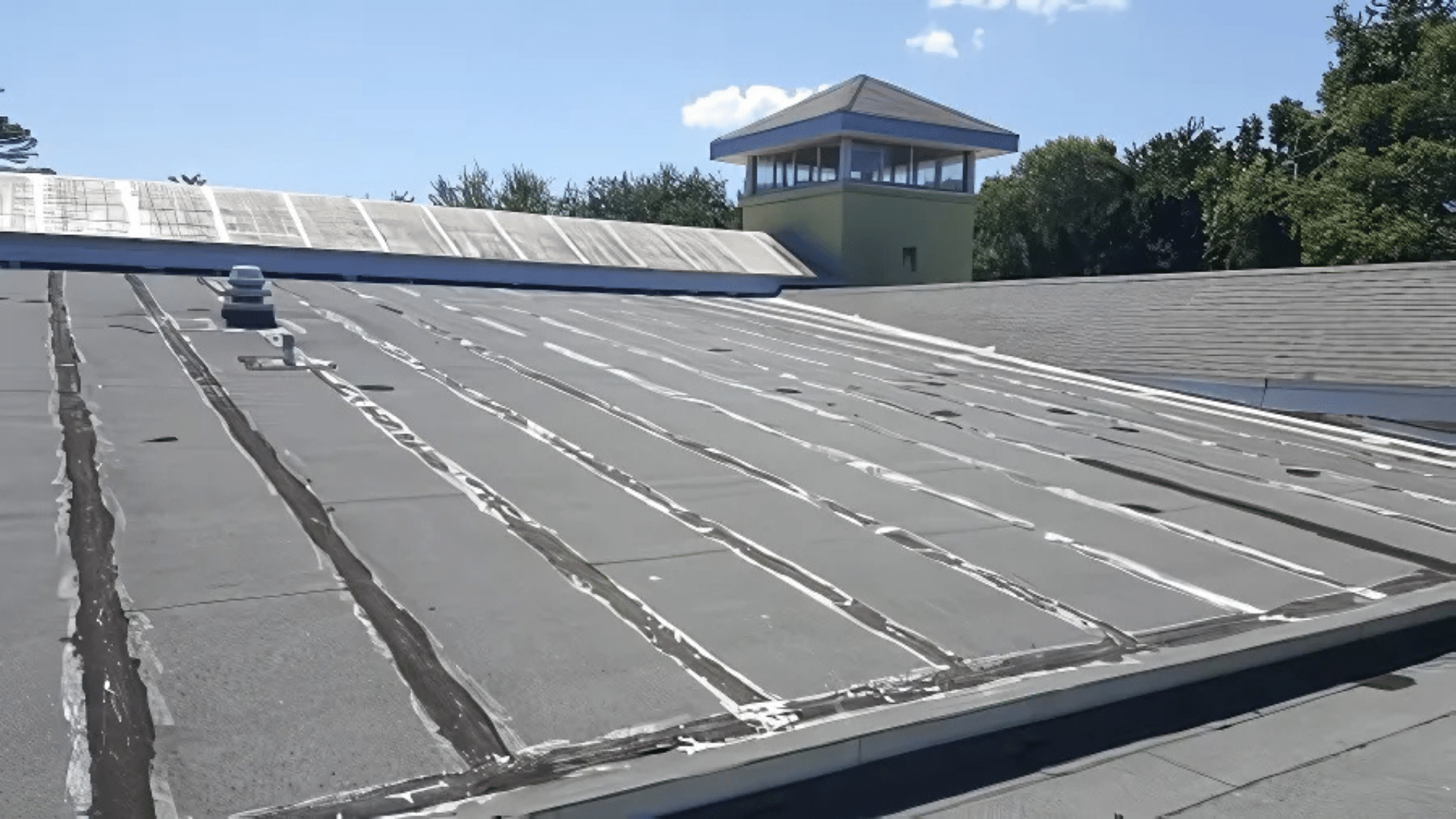
This is the old-school champion of flat roofs. I like to think of BUR as the tough guy of roofing systems.
What makes BUR special:
- Multiple layers of tar and gravel create a thick, protective barrier.
- The gravel top reflects sunlight and protects from UV damage.
- It can handle heavy foot traffic from maintenance crews.
- Fire-resistant properties make it safer for commercial buildings
I’ve seen BUR roofs that have lasted 30+ years with proper maintenance. The gravel surface might look rough, but it’s incredibly durable. Heavy equipment can sit on it without causing damage.
Cost benefits I’ve noticed:
- Lower upfront installation costs compared to newer systems
- Repair materials are widely available and affordable
- Local contractors know how to work with BUR systems
2. Modified Bitumen Roofs
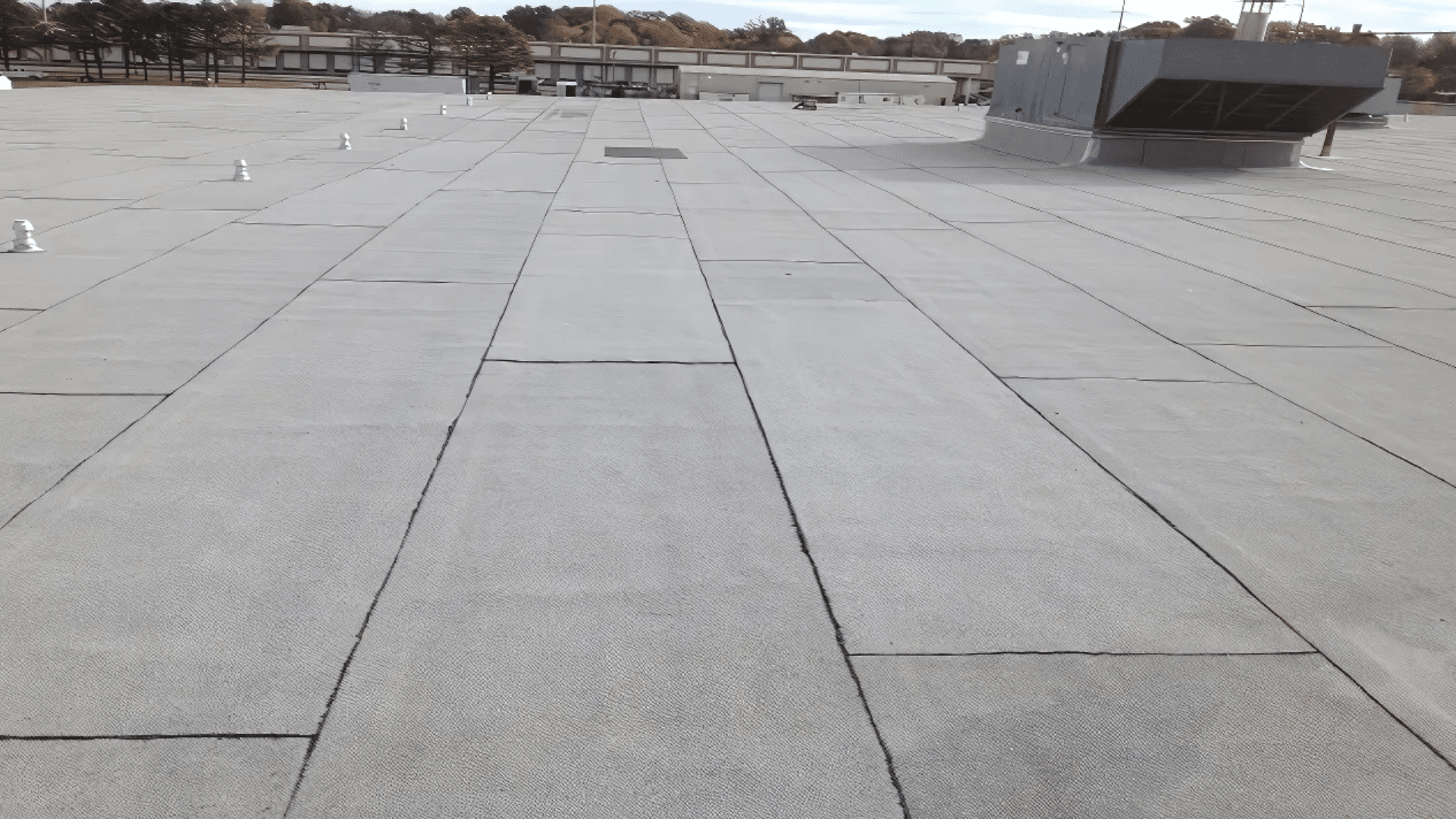
This system caught my attention because it combines old-school reliability with modern improvements. I think of it as BUR’s smarter cousin.
Two installation methods:
- Torch-applied: Uses heat to bond layers together.
- Peel-and-stick: Self-adhesive versions that don’t need torches.
Performance advantages:
- Works well in both hot and cold climates
- Flexible material that moves with building expansion
- Better waterproofing than traditional BUR systems
- Easier to repair when problems occur
I’ve talked to contractors who prefer modified bitumen because it’s forgiving during installation. If they make a mistake, it’s easier to fix than with other systems.
3. Single-Ply Membranes (TPO, EPDM, PVC)
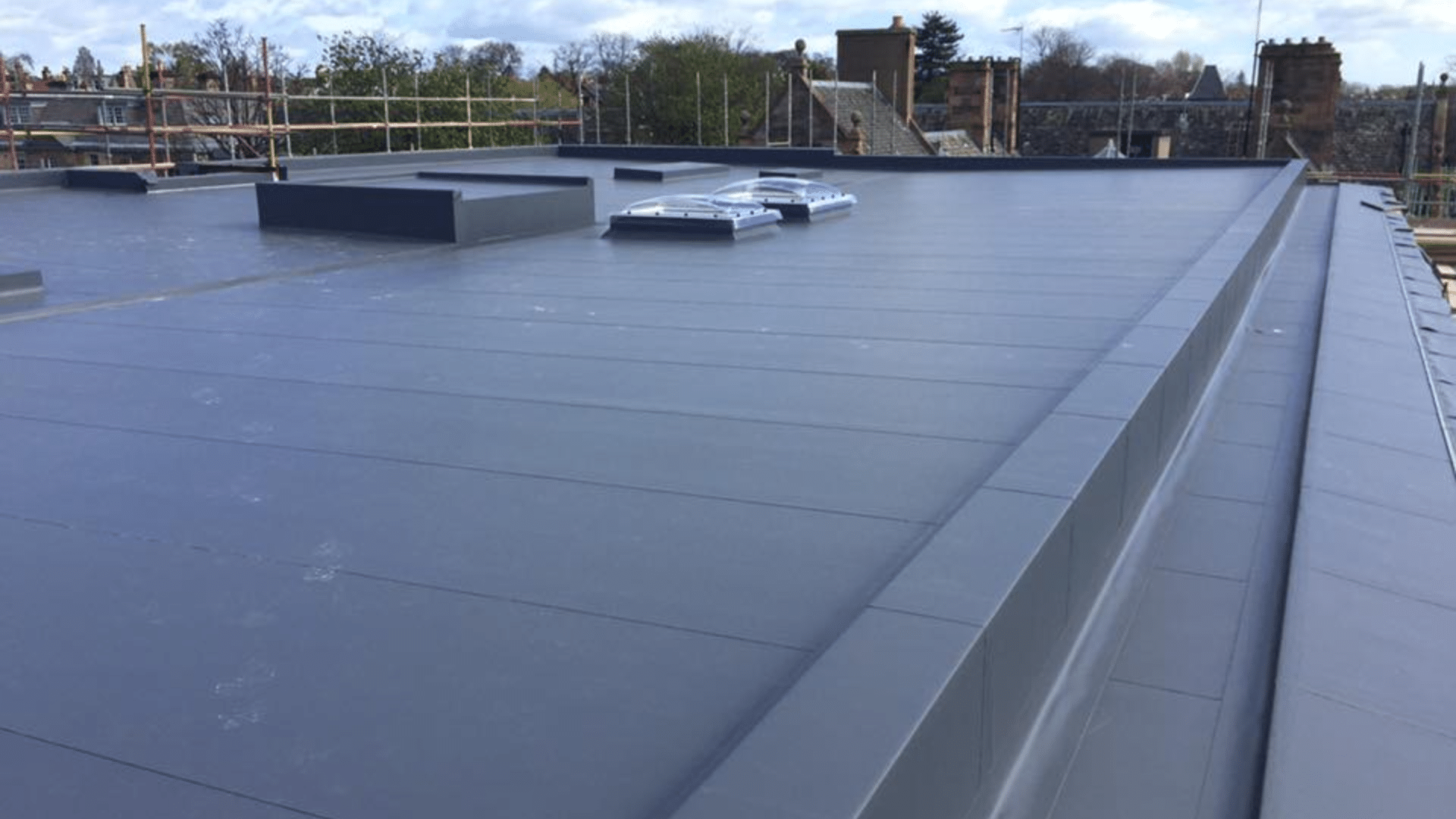
These are the modern stars of flat roofing. I was impressed by how lightweight yet effective they are.
- TPO (Thermoplastic Polyolefin): It is a lightweight, white roofing membrane that reflects heat to reduce energy consumption and lower energy costs. Its welded seams ensure a watertight barrier. It offers a strong balance of affordability and durability, making it popular for new commercial roofs.
- EPDM (Ethylene Propylene Diene Monomer): Also known as rubber roofing, it is a flexible black membrane recognized for its ability to withstand temperature fluctuations without cracking. It’s straightforward to install and maintain, and is favored for its durability.
- PVC (Polyvinyl Chloride): PVC membranes offer excellent chemical resistance, ideal for buildings exposed to grease or oils. With strong welded seams, PVC roofs rarely leak. Although more expensive upfront, they offer a longer service life.
How to Choose the Right Flat Roof?
To choose the right flat roof for your building, consider your climate. EPDM excels in cold areas, TPO is ideal for hot climates, PVC suits coastal or industrial environments, and modified bitumen is a reliable choice for moderate conditions.
Building size matters too: large roofs benefit from TPO’s wide sheets, while EPDM is cost-effective for smaller or complex designs.
Weigh upfront costs against lifespan; BUR is affordable but maintenance-heavy, while TPO, PVC, and EPDM offer longer service with less upkeep.
If sustainability is a priority, look for cool roofs, green roof systems, and solar-ready membranes.
Most importantly, select an experienced contractor with system-specific expertise, as proper installation is crucial for long-term performance and warranty protection.
Tips for a Lasting Flat Roof
Proper care is essential to extend the life of a flat roof. Follow these key maintenance tips to prevent costly damage, improve durability, and keep your commercial roof performing efficiently year-round.
- Schedule inspections every six months, preferably in spring and fall, to catch issues like cracks, pooling water, or loose seams before they become bigger problems.
- Keep drains and gutters clear throughout the year; remove debris monthly, especially after storms, and ensure water does not pool for more than 48 hours.
- Limit foot traffic and heavy equipment on the roof; allow access only for essential maintenance, and use walkway pads to protect the membrane surface.
- Address minor repairs immediately, fixing bubbles, cracks, or damage as soon as found to avoid costly structural issues later on.
- Maintain proper insulation and ventilation to reduce temperature stress on roofing materials, prevent moisture buildup, and extend roof lifespan while saving on energy costs.
The Bottom Line
Looking back at everything we’ve covered, I hope your thoughts about why commercial buildings have flat roofs now see that flat roofs on commercial buildings aren’t just about saving money upfront. They’re strategic choices that support business operations for decades.
From easier maintenance to energy savings, flat roofs solve real problems that business owners face daily. The roofing industry keeps improving, too. New materials are more durable and eco-friendly than ever before.
Next time you see a commercial building, you’ll know there’s smart thinking behind that flat rooftop. It’s architecture that works as hard as the people inside.


